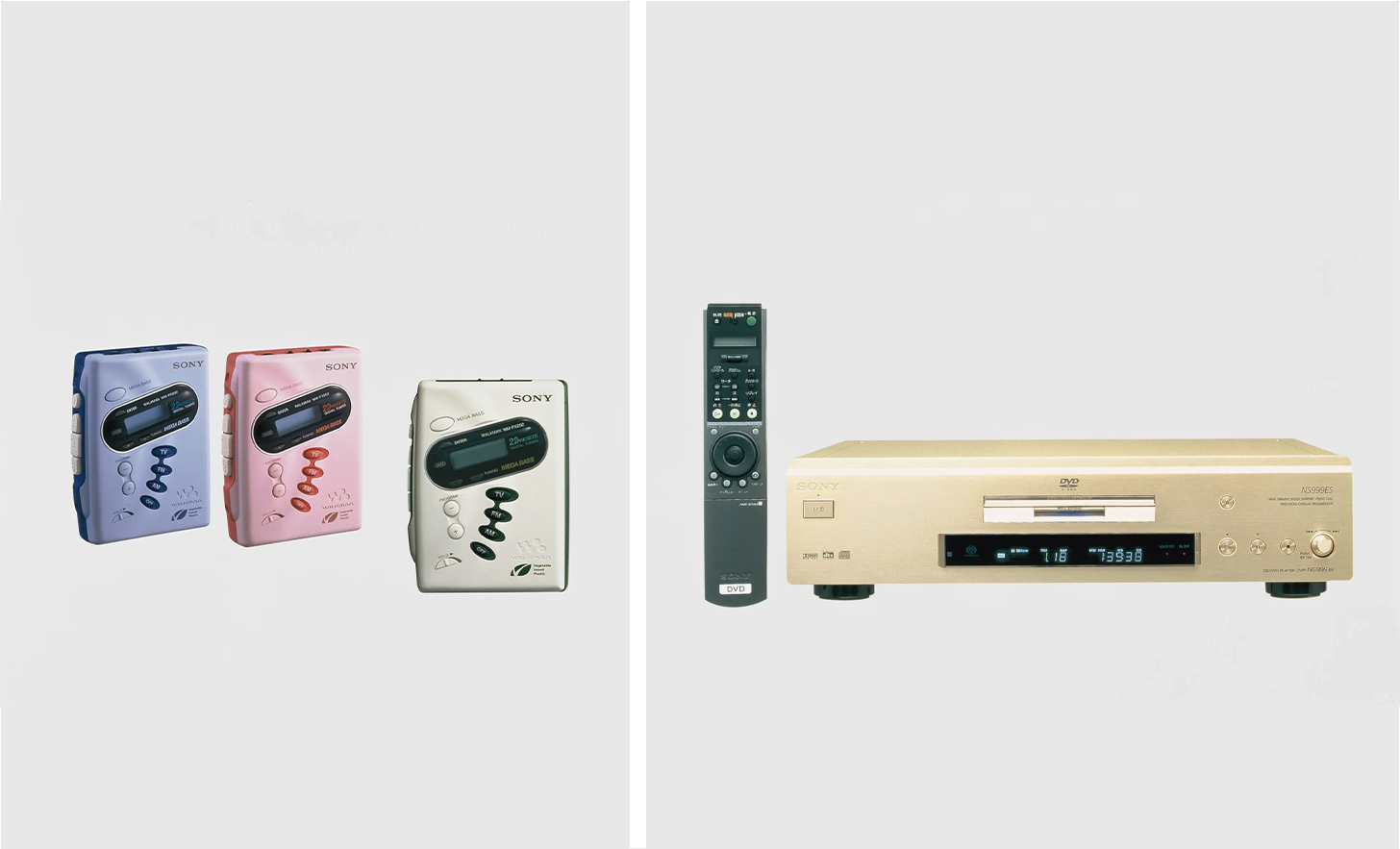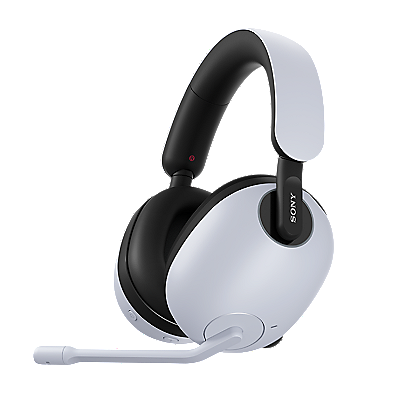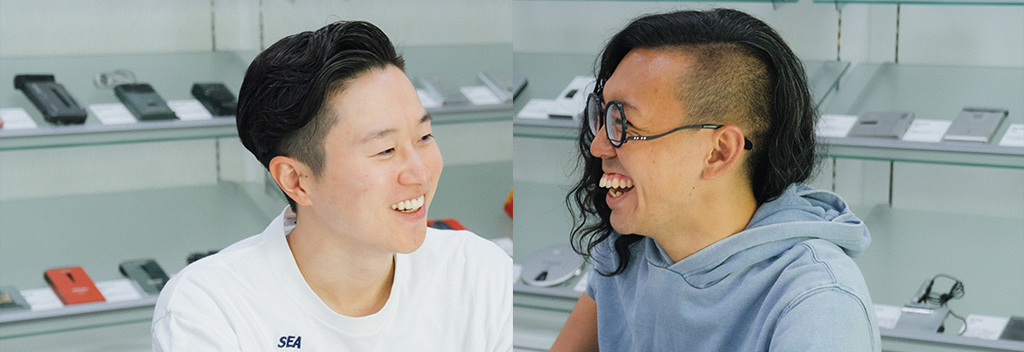What's Your Story? Junior Reporters' Takeaways
20 Years in the Making:
Recycled Plastics Excellent Enough for the Audio Experts
09/01/2022

20 years ago, back in 2002, vegetable-based plastic was first used in the production of the Walkman®, a well-known and legendary Sony product.
One of the people responsible for bringing this material to the market was Yuko Fujihira at Sony Corporation (SEC). She has constantly been involved in developing innovative and unique materials since joining the company. In 2019, she was part of the team that developed the new "quality sound recycled plastic" for home audio products. Yuko says that creating a material with both outstanding sound properties and environmental credentials was one of her greatest development challenges.
Joining Yuko for this interview was Mariko Kobayashi, who is involved in procurement at SEC and also comes from a science-based background. Mariko was eager to learn more about Yuko's enthusiasm for the expanded use of recycled plastic, as well as the untold story behind its development.


Asking the questions!
Mariko Kobayashi


Providing the answers!
Yuko Fujihira

Introduction of vegetable-based plastic for the Walkman 20 years ago
[Kobayashi]
Yuko, as someone who has constantly been at the forefront of R&D at Sony since joining the company in 1999, you are a real inspiration to me. Like you, I also have a science-based background, so I really hope that I can follow in your footsteps.
[Fujihira]
Thank you. When we first met, you shared so much about your work in the Procurement Centre, so please ask me anything you like today.
[Kobayashi]
You were first assigned to R&D in the Environment Technologies Dept., right?
[Fujihira]
That's right. When I joined the company, Sony was just beginning to develop vegetable-based plastic, so that was what I was involved in right from the start.
Around the world today, we see a real push to reduce the use of oil-based plastics, with plastic straws being replaced with paper ones, and supermarkets charging customers for plastic bags, for example. Back in 1999, you could say we were experiencing the first "environmental boom", with people paying more attention to environmental issues. But even before environment-related initiatives were a "thing", Sony was already concentrating on the development of original materials that would not burden the environment. Thanks to this pioneering spirit, we managed to create products using vegetable-based plastic before other companies.

[Kobayashi]
Vegetable-based plastic was first used in 2002, and I was surprised to hear that the first products to feature this material were DVD players and the Walkman. The Walkman is one of Sony's flagship products—did that create any additional internal hurdles for you?
[Fujihira]
Well, we did come up against some challenges…(laughs). The plastic we used in the Walkman was a polylactic acid-based plastic made from maize. My manager and I were determined that, to make this a meaningful endeavour, we should be able to call it a vegetable-based plastic proudly and without reservation, so we focused on achieving a vegetable-based content ratio of at least 51%.
It was the first development project I was assigned to, and I was really happy when we successfully commercialised it.
One of the weaknesses of the polylactic acid in vegetable-based plastics is that it is not as durable against heat and humidity as oil-based plastics. We needed to therefore control the inherent biodegradability. It was essential to maintain the material's strength during use, and we considered a number of modifications for that.
[Kobayashi]
For something like a Walkman, which is used on-the-go, you really need the plastic to be strong and durable don't you?
[Fujihira]
Exactly. The next product we tried to develop was a DVD player, and there were a lot of issues to overcome there as well. In addition to basic performance, the internal components needed to be flame resistant, so we had to tackle many challenges such as adding flame retardant properties and ensuring low environmental impact.
Transferring to a business division after experiencing the joy of collaborative product development; creating cinema-quality sound with recycled plastic
[Fujihira]
Unfortunately, there were also processing issues with vegetable-based plastic, and it proved difficult to continue to make the products.
Even so, I will never forget my experiences from that time. Collaborating with the design team and people from other departments reaffirmed the thrill of product engineering for me and made me want to go even further. Then, in 2013, I transferred to the audio materials development team in the audio business unit. The first product I had worked on was the Walkman, so I already felt a link with my colleagues in the audio-related departments.
[Kobayashi]
When you move from a research lab to a business division, I imagine that there is quite a big difference in working culture. Was that a challenge for you?
[Fujihira]
I was surprised by the speed of development and also the tight schedules. In the research lab, we were allowed to focus on a single theme for an extended period, but in the business division, we have to produce results within a set period of time. I also got a keen sense of just how important it is to make efforts to reduce costs in the process of creating a new product. In the business division, some kind of challenge crops up almost every day, and it is very stimulating to be in an environment where everyone is a problem-solving pro and always looking for solutions with a positive mindset.
[Kobayashi]
I hear that in the audio business division, you all worked to overcome challenges relating to the quality of sound produced by recycled materials so that they could be used for home audio products.
[Fujihira]
Yes, and today I brought with me a sample of the raw materials we use in our recycled materials. Go ahead—pick them up and have a feel.
[Kobayashi]
Wow, they're so colourful! Really shiny and pretty.


[Fujihira]
The raw materials are either transparent or blue. The transparent ones are from discs, and the blue ones are made from the water bottles used in water dispensers. We wash the collected waste products, remove all the films and coating on the discs, and process the raw materials into these flakes.
Pink, black and white grains are ready-to-use plastic pellets. Recycled raw materials are combined with virgin plastics materials and flame retardants to create these pellets that can easily be used in products.
[Kobayashi]
Audio products come in many different colours, so I suppose you need to prepare a whole range of them?
[Fujihira]
Recycled materials are difficult to manage in terms of colours. For example, if you apply a white colour, there is always a possibility of black spots appearing which may result from foreign materials mixed through recycling. That's why the standard colour is black. We do, however, have some prototype products where we have tried to take on the challenge of adding some colour.
[Kobayashi]
Wow, an unreleased sample. What is that blackboard-like thing you've brought with you?

[Fujihira]
It's the rear panel of a sub-woofer that is used in combination with a Sony soundbar. This is a prototype made from recycled materials, but the product is already actually available to buy.
Of the various audio equipment we offer, the soundbar in particular is intended to deliver cinema-quality sound in your home. When developing a recycled material for it, a major challenge we faced was to match or exceed the sound quality of the plastic that we currently use.
[Kobayashi]
When you're trying to provide the highest quality sound, I imagine all development hurdles are challenging, regardless of whether you're using recycled materials.
[Fujihira]
Yes, because once you start changing the component materials, the sound quality also changes. In particular, I have the feeling that, when I joined the sound team, there were concerns about the sound quality of recycled materials. In order to overcome those concerns, we took onboard all the advice we received from sound experts about clarity, resonance and so on, and incorporated them into the materials and their composition.
[Kobayashi]
In my student days, I was involved in a small-scale research project to synthesise and assess inorganic materials, so I can imagine the difficulties your project faced. It really is tough work to develop a new material and ensure that it can be mass-produced and used for products while also keeping costs in mind too, isn't it?
[Fujihira]
Yes, and even when you have developed something, if no one wants to use it, then the entire process becomes nothing more than a personal vanity project. I really felt the importance of communicating with members of other divisions to understand as quickly as possible what it is that they want, and to then work to accurately share the details of the development process.

Lessons from 20 years of development: The importance of a challenging and stimulating workplace
[Kobayashi]
Today, when customers and other external parties evaluate a company, they pay particular attention to how responsibly the company manages its supply chain and how well it is promoting sustainability. In the Procurement Centre, when we select partner companies, one of the basic criteria we check is whether the company has such a perspective. I think the fact that Sony has introduced recycled plastic in so many products shows the world just how dedicated we are to environmental issues.
[Fujihira]
At Sony, we never forget that, in the process of making products, we are using the Earth's resources and energy.
Sony has a number of unique technologies that have caught people's attention, such as the recycled plastic SORPLAS™ and also Triporous™*, a porous carbon material made from rice husks. Development of these materials actually began in the 2000s. They were developed by my previous department, the Environmental Technologies Dept, and
I am really delighted that, after such a long development period, they have been adopted for products within and outside Sony.
I am so impressed by my colleagues for never giving up, and I really feel that Sony provides a challenging and stimulating work environment.
Although plastic materials tend to be viewed negatively, they are inexpensive to produce and offer outstanding processability and convenience. That's why I believe there must surely be sustainable ways for plastics to continue to be part of our everyday lives. At the same time, the issue of marine plastics continues to worsen, and we must work on a global scale to build a collection and recycling system to prevent careless and harmful dumping of plastics.
Personally, my aim is to develop more technologies capable of contributing to solving environmental issues and, in so doing, ensure that sustainability initiatives are mainstream in the future. I also want to get involved in research that no one has looked at yet and to continually take up new challenges.

Takeaways from the perspective of a junior reporter
Creating trust through quick and accurate communication
I have a lot of negotiations with people outside the company, and my challenge is making sure to express myself carefully and effectively so that they can better understand us. I was really inspired by Yuko's story about the importance of communicating "quickly and accurately" and building trust in order to ensure that development does not end up simply being a personal vanity project.
Failure is inevitable in materials development
Materials development can be a continuous stream of seemingly impossible problems. When I asked Yuko how she kept her motivation up when she got stuck, her answer was, "There's so much research that has never seen the light of day, so I don't get downhearted, even when I fail. If you keep working at something, you'll find you get there in the end." I realised that it was her 20 years of step-by-step progress that ultimately led to the expansion of the use of recycled plastic.
Companies with technologies have a responsibility to society
In the future, I felt that how a company approaches environmental issues will become a measure of its value. Until now, people have evolved technologies for use in their daily lives, and have impacted the planet's natural environment in the process. Now, however, we can possibly use the power of technology to reduce the environmental impact. I got a real sense that companies like Sony that have various technological capabilities have a major responsibility in this respect.
* Triporous is a new material made from rice husks, of which more than 90 million tonnes is generated worldwide each year. Thanks to its unique patented microstructure, Triporous offers potential applications in a wide range of fields, such as water and air purification.
To learn more about the recycled plastics Yuko was involved in and her work on the HT-S400 soundbar, visit: Sustainability sounds great
Sony's WH-1000XM5 headphones and LinkBuds also use a unique recycled plastic. Learn more at: All-round consideration for the environment
Text: Airi Tanabe Photography: Kiara Iizuka
[Environment] [#Creativity] [#Technology] [#Collaboration]























